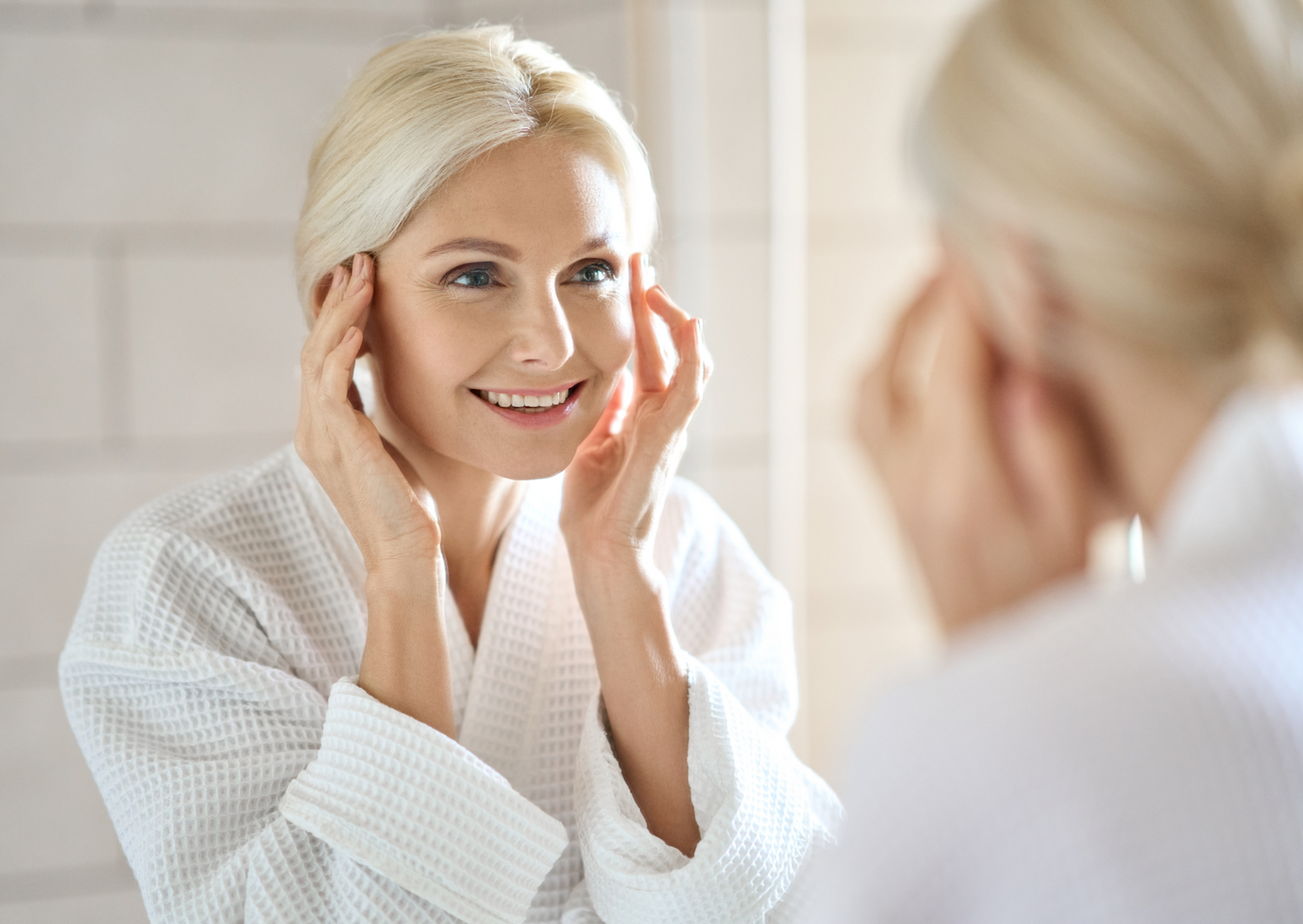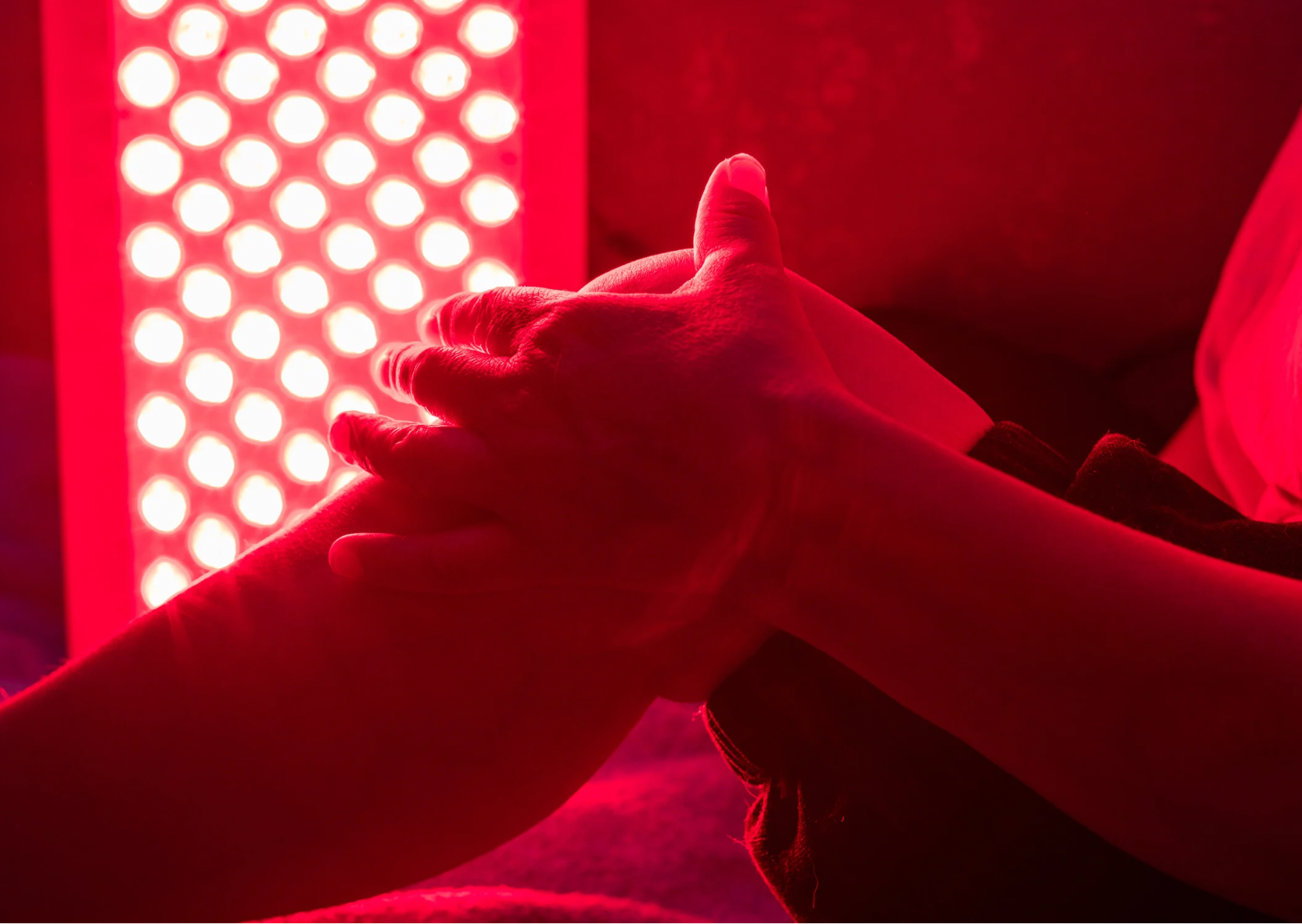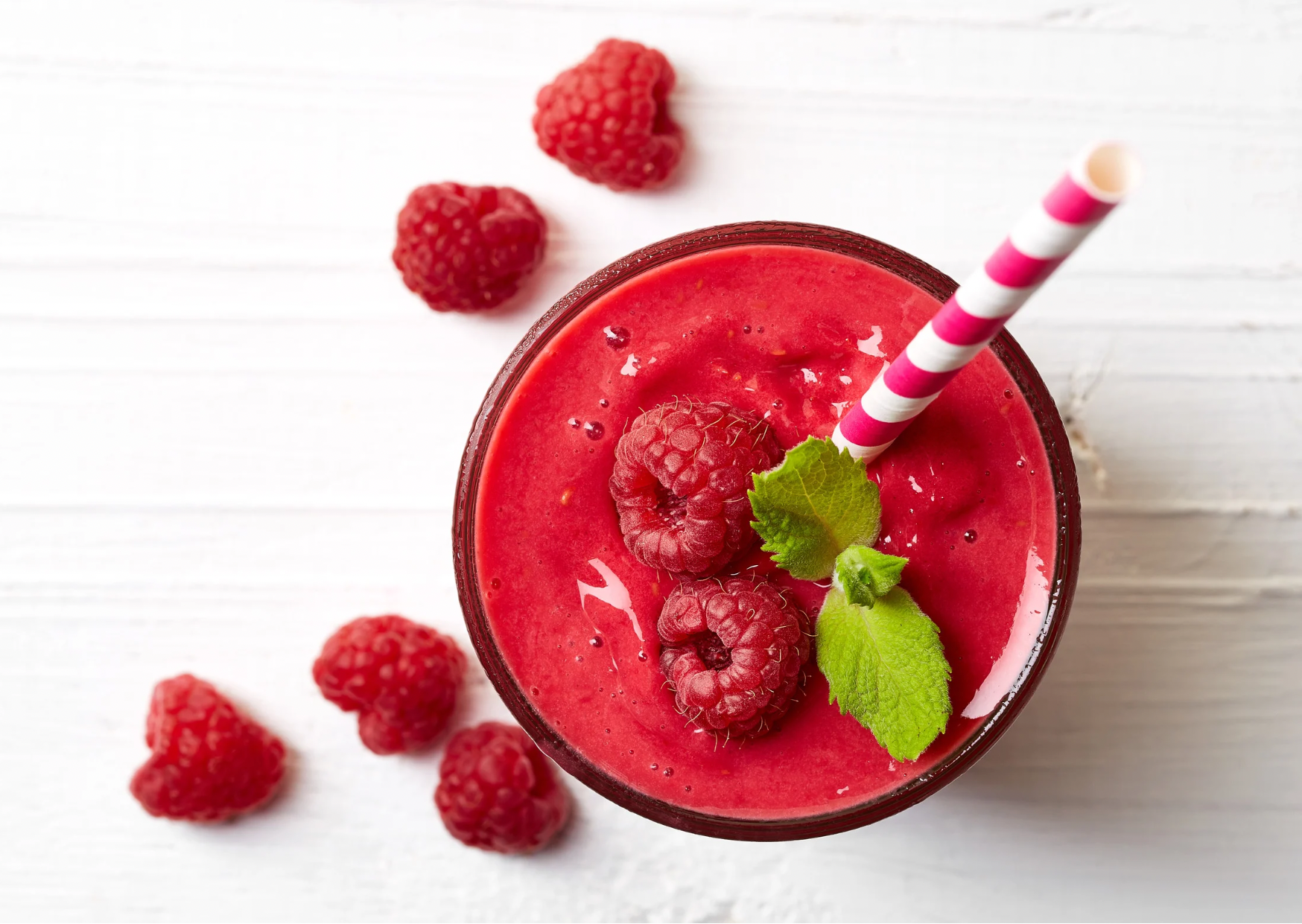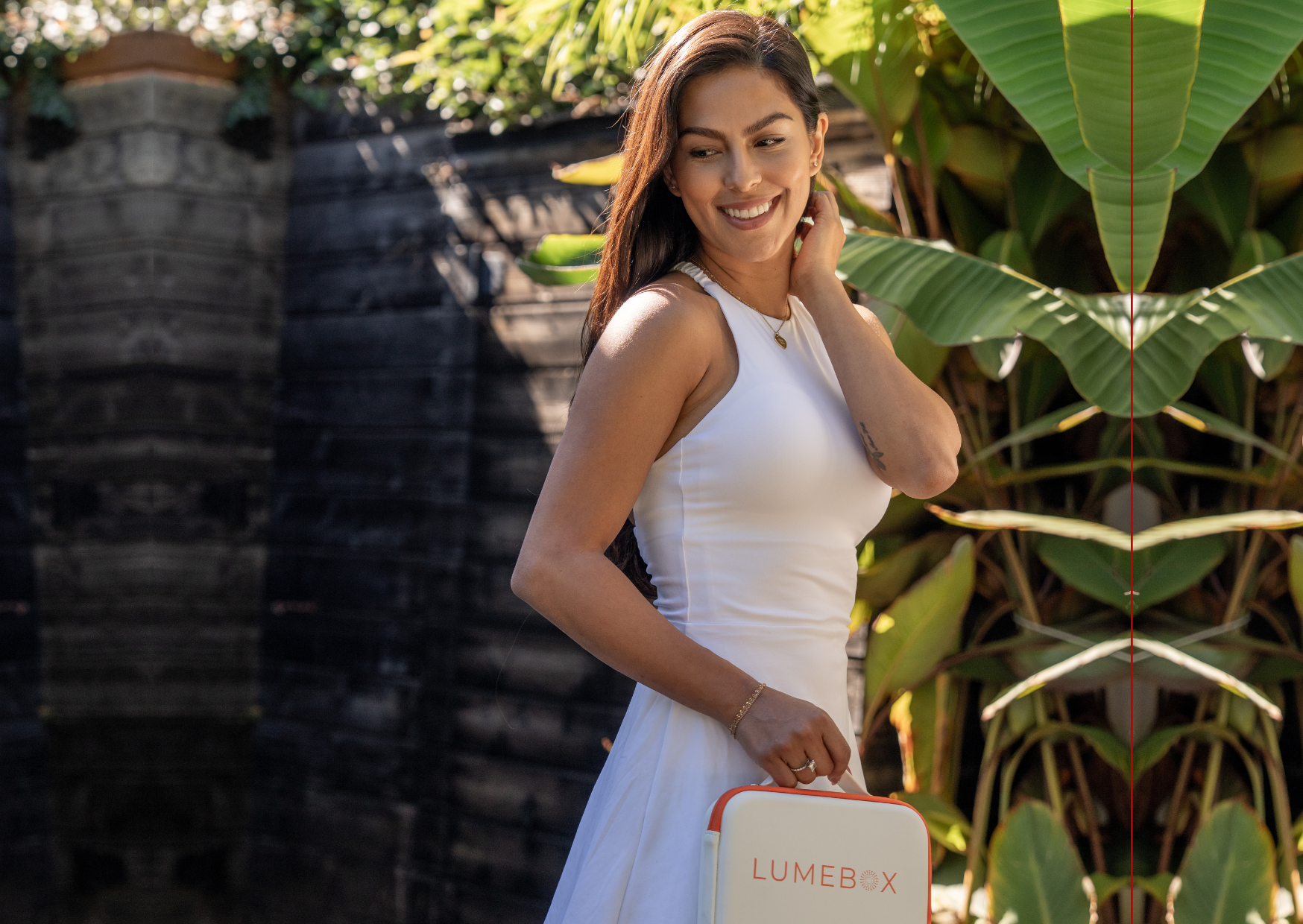Aging is a natural part of being human, a privilege that brings with it wisdom, grace, and respect.
However, in our high-stress and polluted world, the signs of aging are being accelerated. Regardless of age, many people desire a youthful appearance and aim to minimize visible fine lines - so it’s no surprise that the ‘anti-aging’ industry is $62 billion in the US.
Consider these common treatments and their price tags:
- Anti-wrinkle facial injections, often costing around $400, target only small facial areas and wear off over time, requiring repeated injections.
- The average facelift comes with a significant investment of about $10,000.
- Chemical peels, ranging from $100 to $1,000, often involve significant downtime and discomfort.
These options may strain your finances and often provide limited overall health and wellness benefits.
The good news is that how we live has the power to influence how we feel on the inside, which translates into our outside appearance.
One emerging and effective option will be discussed in this blog: Red Light Therapy!
Why Collagen Keeps Us Youthful
Collagen, like an ultimate party host, keeps everything in our body young and lively! It's everywhere – in our muscles, skin, blood vessels, bones, digestive system, you name it!
A lot of people don’t realize that net loss of collagen starts in your 20s… the skin produces 1% less collagen [1] every year.
Collagen and elastin are responsible for our skin’s strength and resiliency. When we are exposed to different stressors, collagen and elastin can degrade and become disarranged [2], causing wrinkles.
Our skin’s appearance and suppleness rest on the balance between the rate of collagen creation and the rate of collagen degradation in the skin. Therefore, the goal of improving skin appearance and skin quality is to:
a) reduce collagen breakdown and
b) boost its production.
The first step is to remove the things that accelerate its degradation…
What Factors Accelerate Collagen Breakdown?
- Air pollution causes oxidative stress, which can cause brown spots and wrinkles [3].
- Smoking triggers inflammatory processes [4]. People who smoke tend to have more wrinkles than nonsmokers [5]. See this study on twins for an interesting read!
- Sugar intake has been linked with glycation of the skin [6], a process that interferes with the normal repair process of collagen, making skin less flexible and less capable of being maintained. A diet of simple carbohydrates and processed meats also leads to a decline in collagen.
- Stress drives inflammation as a result of poor mitochondrial activity. Cells do not replicate and begin to die [7]. Cortisol, the stress hormone, is also known to decrease the production of collagen [8].
- Sleep deprivation can cause dark circles, water loss, and redness. Interestingly, studies have shown that better sleepers also report a better perception of their appearance and attractiveness [9].
- UV radiation is the biggest factor for skin aging. Repeated exposure to sunlight, especially its UV rays, speeds up skin aging in two main ways [7]:
- It increases the activity of enzymes that break down collagen and elastin
- It decreases the skin's ability to produce new collagen
- Temperature of the skin. In just 15-20 minutes, skin can be heated up to a temperature of 40°C by UV radiation in direct summer sunlight. Such a heat shock can induce a stress response in the proteins that keep our skin looking young [10].

Support Collagen Production With Red Light
You might be wondering which of the above factors red light therapy can help with.
The answer is pretty much all of them!
Red Light Therapy may be a great option for skin rejuvenation, with next-to-no side effects, if you're looking to:
- Support collagen and elastin production [11]
- Smooth lines and wrinkles [15]
- Repair damaged skin [12] and improve the appearance of scars [13]
- Reduce inflammation [22]
- Reduce the appearance of acne [23]
- Assist mitochondrial function to reduce wrinkle formation [14]
Clinical Studies on Skin Elasticity
Here’s the science:
- A randomized, placebo-controlled, double-blind study separated 112 participants into groups to be treated with 633 nm (RED) treatment, 830 nm (NIR) treatment, or both. The LED treatment was at 105 mW/cm2 for RED and 55 mW/cm2 for the NIR, held 1-10 cm away from the face. Participants received light on half of the face for 8 sessions over the course of 4 weeks. 12 weeks after treatment, they saw a statistically significant reduction in wrinkles and improved skin elasticity. After looking at skin specimens, researchers also saw an increase in collagen and elastin fibers (because the light increased the metabolic activity of fibroblasts which secrete collagen). [15]

- Another randomized control study had 113 volunteers treated twice weekly with RED or both RED and NIR light (5 - 25 mW/cm2 irradiance). Compared to the control group, those who received treatment experienced significant improvements in skin complexion and feeling (evaluated with photography and patient satisfaction), roughness (through digital profilometry), and collagen density (measured using ultrasound) [16]. Check out this wrinkle reduction!

- A prospective study on 90 patients with photoaged skin used 580 nm LED delivered to the full face over the course of 4 weeks. Digital imaging and skin samples showed a reduction of signs of aging in 90% of subjects. Smoother texture, reduced wrinkles, less redness and pigmentation were all observed. The collagen density in the skin was increased in all of the specimens. [17]
- The effects of RLT are lasting (6 months): A study on global photoaging used infrared laser (915 nm) to treat 26 subjects in terms of rhytides, laxity (skin looseness), dyschromia (discoloration), erythema (redness), telangiectasias (visible blood vessels), and skin texture. Subjects received 4 treatments at 1-month intervals. 5 different scores were taken to measure these factors, and after 1 month of treatment, participants experienced a statistically significant improvement in all five aspects. The global effects of laser on photoaging became more apparent 3 months after treatment and were maintained even 6 months after. [18]
Note: the LED light therapy devices used in these studies were not LUMEBOX.
RLT Skincare Routine
1. Cleanse – Gently cleanse your skin, ensuring it's clean and dry before your session. Remove any makeup or sunscreen beforehand, and avoid photosensitizing ingredients like retinol, as they can increase skin sensitivity to light.
2. LUMEBOX – Use in red or combined mode, holding the device 6 inches away from your face for 6 minutes. This provides an irradiance of approximately 22 mW/cm², delivering a dose commonly used in studies on skin health and appearance. Ensure even coverage across your face (use our custom stand to level up your routine).
3. Hydrate & Nourish – After your session, apply a serum or moisturizer to lock in moisture.
4. Protect – If using LUMEBOX in the morning, finish with a broad-spectrum sunscreen (SPF 30+).
What Else Can I Do Other Than Red Light Therapy?
Add short bursts of cardio to your routine - you don’t need to run 10 miles to make it count! Simply enough to pump some blood through your face can work wonders.
Use sunscreen or a protective moisturizer (30 SPF or higher) when going outside.
If using LUMEBOX in the morning, apply sunscreen afterward to avoid blocking the benefits!
Vitamin C is great, both topical and systemic - in addition to eating a diet containing vitamin C rich foods, using a vitamin C serum can work wonders.
Use food to stay youthful by incorporating high quality foods that cool inflammation, build collagen, and provide antioxidants for healing. Anthony Youn, MD’s book Younger for Life explains this brilliantly. If you’re not ready to read the book just yet, here are some key takeaways:
Eating colorful fruits, vegetables, legumes, nuts, seeds, and whole grains will always provide you with abundant fiber, healthy fats, antioxidants, rich in vitamin E, C, and carotenoids. For those curious about expanding their palate, here are some additional considerations:
- Omega 3s and monounsaturated fatty acids - cool inflammation with salmon, flaxseeds, seaweed, tofu, olives, avocado.
- Fuel the skin/gut connection - the bacteria in the digestive tract are great at directly reducing inflammation [19], unleashing noticeable effects on skin health. Feed the gut microbiome with kimchi, kombucha, kefir, yogurt from grass-fed cows.
- Antioxidants - from tea, coffee, chocolate can combat oxidative stress which lead to signs of aging.
- Anti-inflammatory fiber and resistant starch - found in oats, green bananas, legumes, fruits and veggies, you can also increase the resistant starch in high starch foods like pasta and potatoes by cooking them then letting them cool in the fridge before eating!
- High protein foods for building collagen - almonds, peanuts and pistachios are the nut powerhouses. Add flax and chia seeds, eggs, and of course, organic grass-fed pasture raised meats (chicken, pork, beef) wild caught fish to your diet too.
- Support collagen production with beta carotene - found in orange foods like carrots, sweet potatoes, and mangoes. Dried apricots are a great source too!
- REDUCE inflammatory foods high in refined sugar, high glycemic load (like white bread, granola bars, breakfast cereals, jelly), and refined fats.
- To combat the effect of high glycemic index foods, cinnamon, cloves, oregano, allspice, ginger and garlic have also been shown to reduce the effects of sugar on skin glycation [20].
Collagen supplements are an option for some, with some small studies showing it may help improve skin elasticity, reduce wrinkles and thicken skin. For best results, you really want to have hydrolyzed collagen peptides present in the supplement for it to work. Experts advise caution when choosing collagen products, however; in 2020, the Clean Label Project [21] tested 28 collagen supplements on the market and found:
- 64% had detectable levels of arsenic
- 17% had cadmium
- 33% were positive for lead.
In the time spent debating whether collagen supplements are worth it or not, we prefer to just use our red light therapy instead - much more evidence.
Think about sleep! Your skin actually rejuvenates during sleep. Stick to a regular sleep schedule, getting at least 8 hours of sleep, most of the time.
Switch up your sleeping position, particularly if you’re not a back sleeper. If your face is pressed against the pillow, sleep creases may appear, especially if your skin is already vulnerable and losing elasticity. Consider these two simple changes; 1) transition to sleeping on your back, and 2) invest in a softer pillow (the added gentleness of a silk pillowcase has benefits for both skin and hair).
Conclusion
If you’re struggling to find a place to start when it comes to preserving skin health, red light therapy can be a promising option to maintain youthful skin, regardless of age.
What’s more, it can be used for a whole host of benefits to help you reach your full potential! Check out our other blog posts on sleep, athletic performance, hair loss, and joint health if you’re interested.
New to red light therapy? Download our free eBook to help you choose the best device.
Already have a LUMEBOX? Download our 6 time-saving tricks guide!
References:
[1] Ganceviciene, R., Liakou, A. I., Theodoridis, A., Makrantonaki, E., & Zouboulis, C. C. (2012). Skin anti-aging strategies. Dermato-endocrinology, 4(3), 308–319. https://doi.org/10.4161/derm.22804
[2] Varani, J., Warner, R. L., Gharaee-Kermani, M., Phan, S. H., Kang, S., Chung, J. H., Wang, Z., Datta, S. C., Fisher, G. J., & Voorhees, J. J. (2000). Vitamin A Antagonizes Decreased Cell Growth and Elevated Collagen-Degrading Matrix Metalloproteinases and Stimulates Collagen Accumulation in Naturally Aged Human Skin. Journal of Investigative Dermatology, 114(3). https://doi.org/10.1046/j.1523-1747.2000.00902.x
[3] Huang, C. H., Chen, S. C., Wang, Y. C., Wang, C. F., Hung, C. H., & Lee, S. S. (2022). Detrimental correlation between air pollution with skin aging in Taiwan population. Medicine, 101(31), e29380. https://doi.org/10.1097/MD.0000000000029380
[4] Nicita-Mauro, V., Basile, G., Maltese, G., Nicita-Mauro, C., Gangemi, S., & Caruso, C. (2008). Smoking, health and ageing. Immunity & ageing : I & A, 5, 10. https://doi.org/10.1186/1742-4933-5-10
[5] Yazdanparast, T., Hassanzadeh, H., Nasrollahi, S. A., Seyedmehdi, S. M., Jamaati, H., Naimian, A., Karimi, M., Roozbahani, R., & Firooz, A. (2019). Cigarettes Smoking and Skin: A Comparison Study of the Biophysical Properties of Skin in Smokers and Non-Smokers. Tanaffos, 18(2), 163–168.
[6] Danby F. W. (2010). Nutrition and aging skin: sugar and glycation. Clinics in dermatology, 28(4), 409–411. https://doi.org/10.1016/j.clindermatol.2010.03.018
[7] Yegorov, Y. E., Poznyak, A. V., Nikiforov, N. G., Sobenin, I. A., & Orekhov, A. N. (2020). The Link between Chronic Stress and Accelerated Aging. Biomedicines, 8(7), 198. https://doi.org/10.3390/biomedicines8070198
[8] Mi, Y., Wang, W., Zhang, C., Liu, C., Lu, J., Li, W., Zuo, R., Myatt, L., & Sun, K. (2017). Autophagic Degradation of Collagen 1A1 by Cortisol in Human Amnion Fibroblasts. Endocrinology, 158(4), 1005–1014. https://doi.org/10.1210/en.2016-1829
[9] Oyetakin-White, P., Suggs, A., Koo, B., Matsui, M. S., Yarosh, D., Cooper, K. D., & Baron, E. D. (2015). Does poor sleep quality affect skin ageing?. Clinical and experimental dermatology, 40(1), 17–22. https://doi.org/10.1111/ced.12455
[10] Seo, J. Y., & Chung, J. H. (2006). Thermal aging: A new concept of skin aging. Journal of Dermatological Science Supplement, 2(1), S13-S22. https://doi.org/10.1016/j.descs.2006.08.002
[11] Pugliese, L. S., Medrado, A. P., Reis, S. R., & Andrade, Z.deA. (2003). The influence of low-level laser therapy on biomodulation of collagen and elastic fibers. Pesquisa odontologica brasileira = Brazilian oral research, 17(4), 307–313. https://doi.org/10.1590/s1517-74912003000400003
[12] Avci, P., Gupta, A., Sadasivam, M., Vecchio, D., Pam, Z., Pam, N., & Hamblin, M. R. (2013). Low-level laser (light) therapy (LLLT) in skin: stimulating, healing, restoring. Seminars in cutaneous medicine and surgery, 32(1), 41–52.
[13] Coombe, A. R., Ho, C. T., Darendeliler, M. A., Hunter, N., Philips, J. R., Chapple, C. C., & Yum, L. W. (2001). The effects of low level laser irradiation on osteoblastic cells. Clinical orthodontics and research, 4(1), 3–14. https://doi.org/10.1034/j.1600-0544.2001.040102.x
[14] Stout, R., & Birch-Machin, M. (2019). Mitochondria's Role in Skin Ageing. Biology, 8(2), 29. https://doi.org/10.3390/biology8020029
[15] Lee YS , Park K, Choi J, et al. A prospective, randomized, placebo-controlled, double-blinded, and split-face clinical study on LED phototherapy for skin rejuvenation: clinical, profilometric, histologic, ultrastructural, and biochemical evaluations and comparison of three different. J Photochem Photobiol.2007;88:51-67.
[16] Wunsch, A., & Matuschka, K. (2014). A controlled trial to determine the efficacy of red and near-infrared light treatment in patient satisfaction, reduction of fine lines, wrinkles, skin roughness, and intradermal collagen density increase. Photomedicine and laser surgery, 32(2), 93–100. https://doi.org/10.1089/pho.2013.3616
[17] Weiss, R. A., McDaniel, D. H., Geronemus, R. G., & Weiss, M. A. (2005). Clinical trial of a novel non-thermal LED array for reversal of photoaging: clinical, histologic, and surface profilometric results. Lasers in surgery and medicine, 36(2), 85–91. https://doi.org/10.1002/lsm.20107
[18] Jiang, M., Yan, F., Avram, M., & Lu, Z. (2017). A prospective study of the safety and efficacy of a combined bipolar radiofrequency, intense pulsed light, and infrared diode laser treatment for global facial photoaging. Lasers in medical science, 32(5), 1051–1061. https://doi.org/10.1007/s10103-017-2207-9
[19] Wang, J., Chen, W.-D., & Wang, Y.-D. (2020). The Relationship Between Gut Microbiota and Inflammatory Diseases: The Role of Macrophages. Frontiers in Microbiology, 11, Article 1065. https://doi.org/10.3389/fmicb.2020.01065
[20] Danby F. W. (2010). Nutrition and aging skin: sugar and glycation. Clinics in dermatology, 28(4), 409–411. https://doi.org/10.1016/j.clindermatol.2010.03.018
[21] https://cleanlabelproject.org/wp-content/uploads/Organic-Consumers-Assoc-White-Paper_Updated.pdf
[22] Hamblin M. R. (2017). Mechanisms and applications of the anti-inflammatory effects of photobiomodulation. AIMS biophysics, 4(3), 337–361. https://doi.org/10.3934/biophy.2017.3.337
[23] Na, J. I., & Suh, D. H. (2007). Red light phototherapy alone is effective for acne vulgaris: randomized, single-blinded clinical trial. Dermatologic surgery : official publication for American Society for Dermatologic Surgery [et al.], 33(10), 1228–1233. https://doi.org/10.1111/j.1524-4725.2007.33258.x




